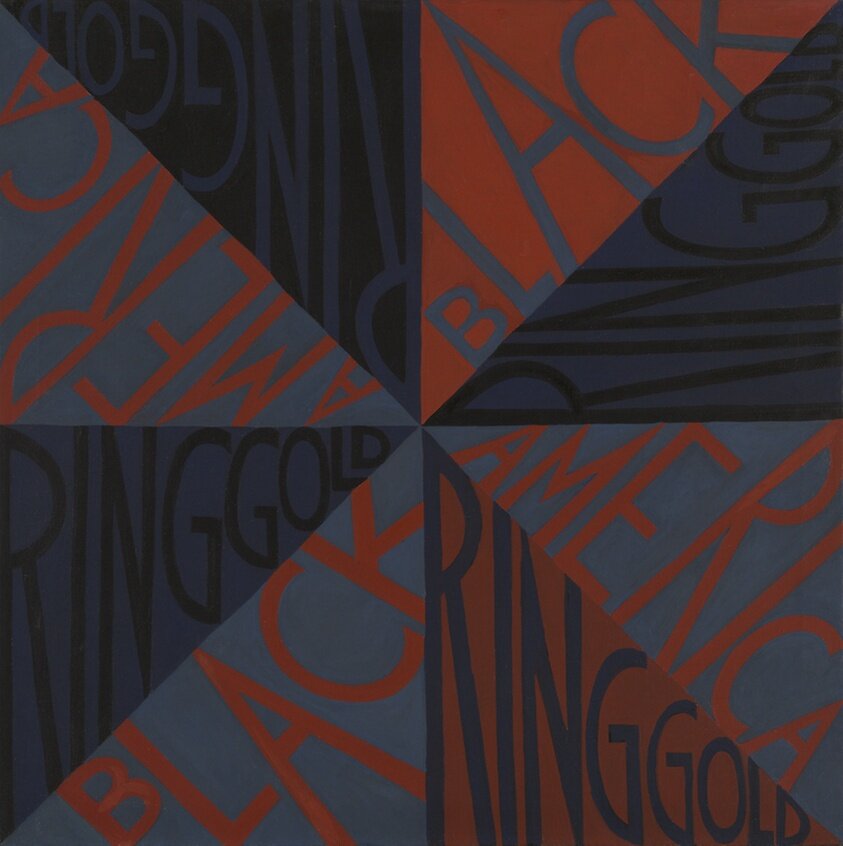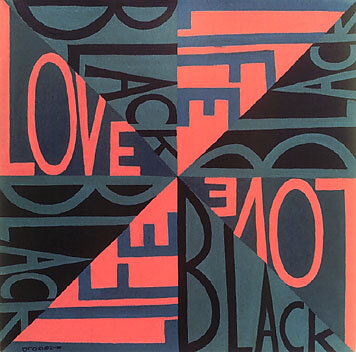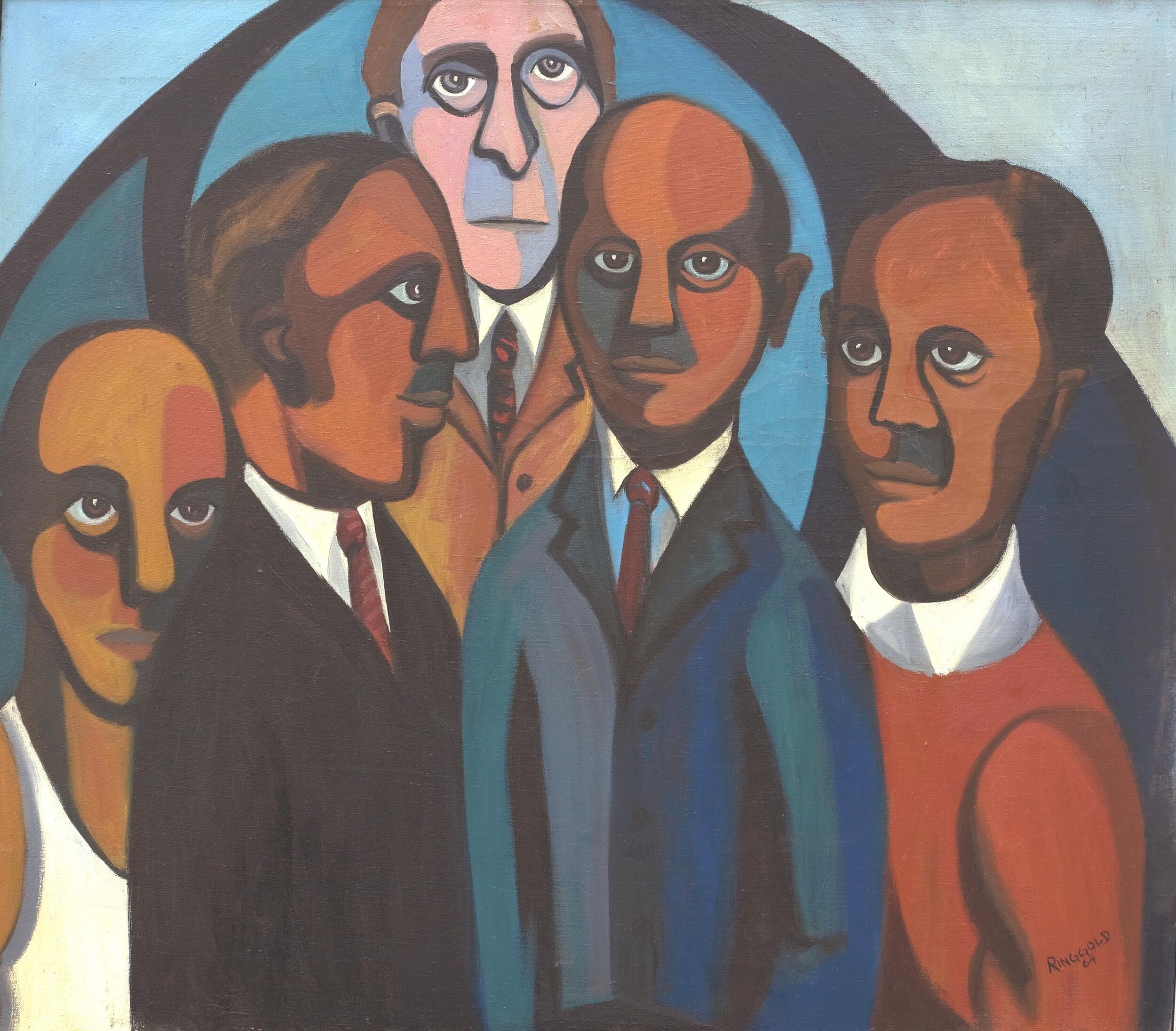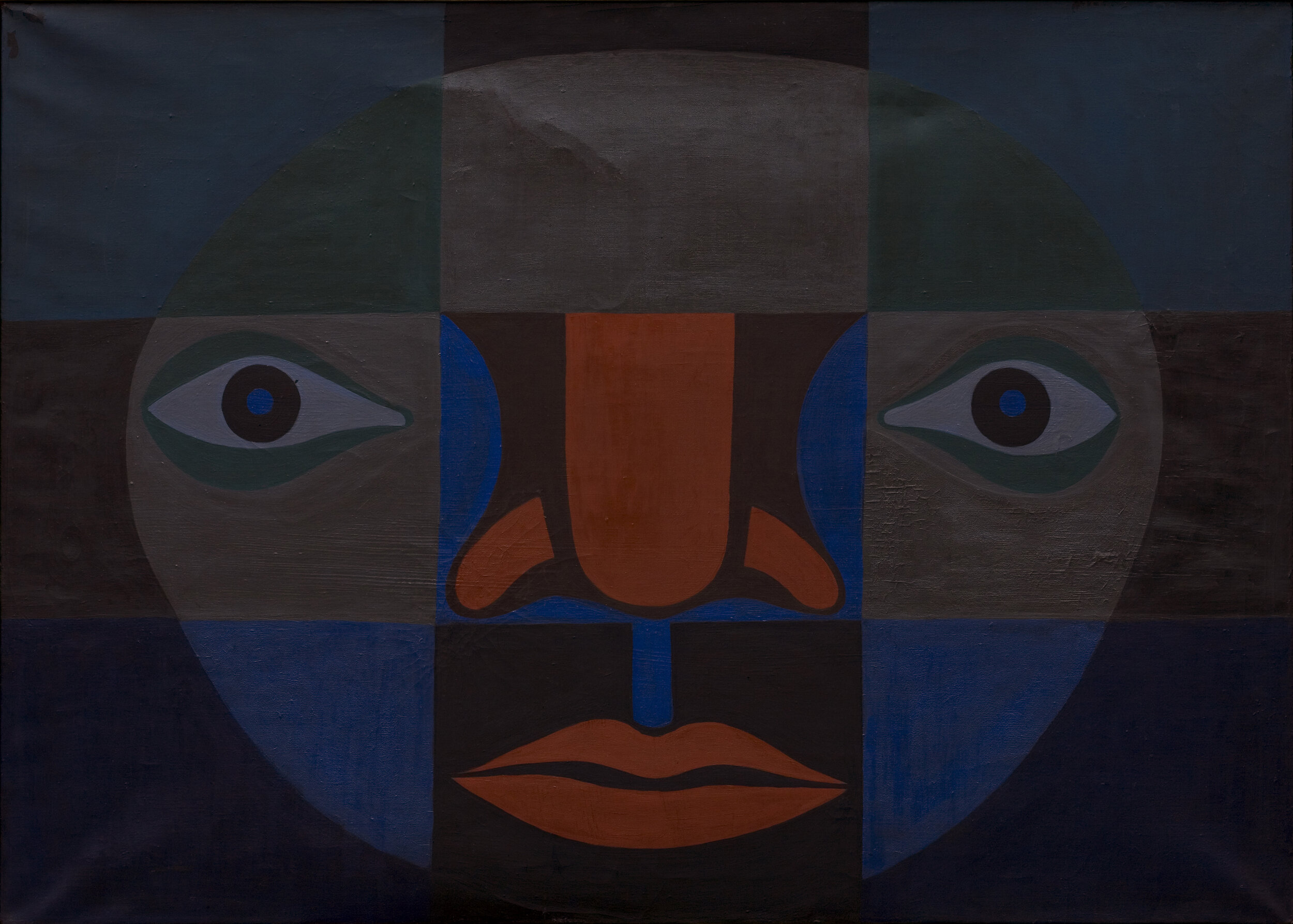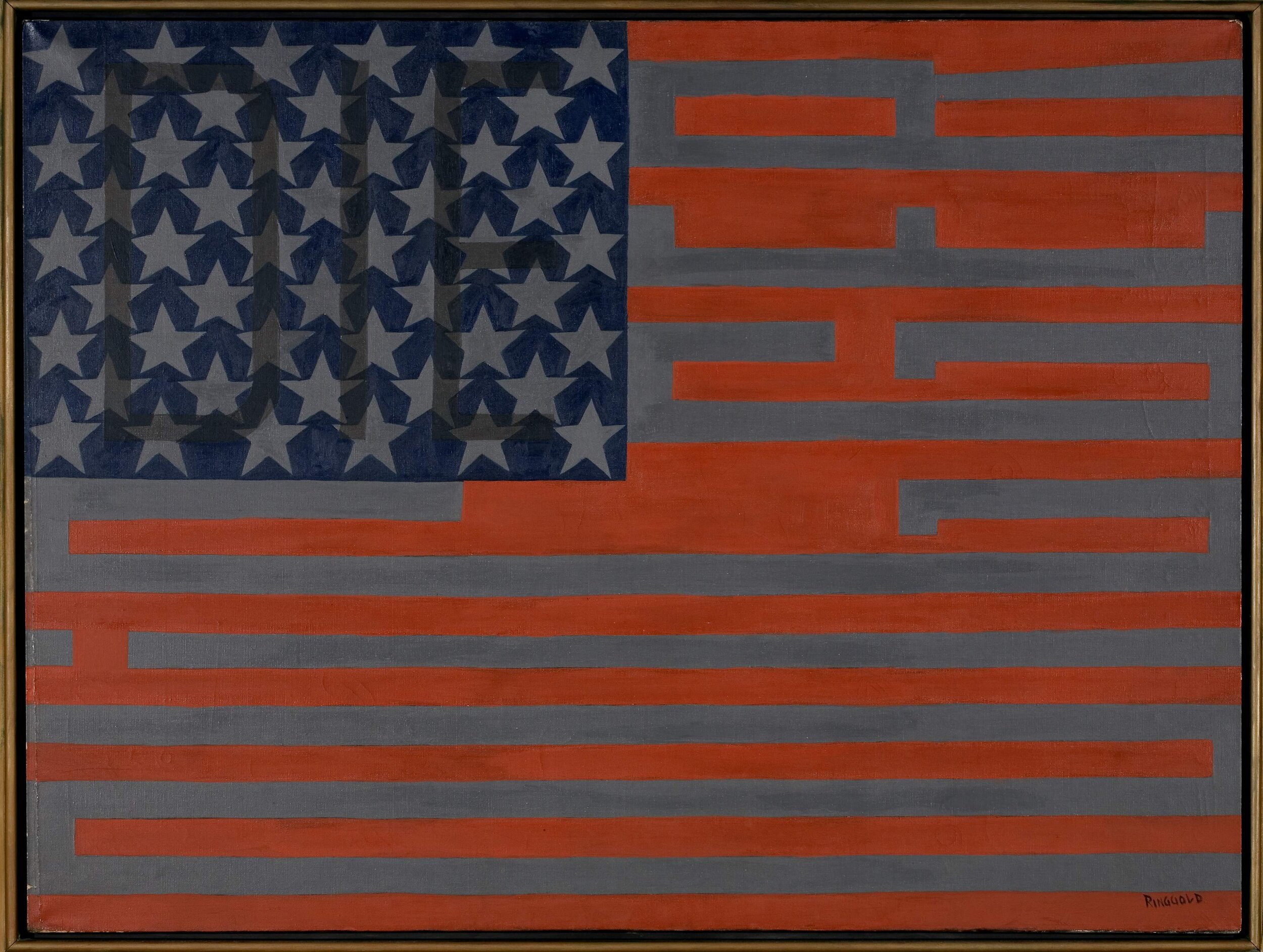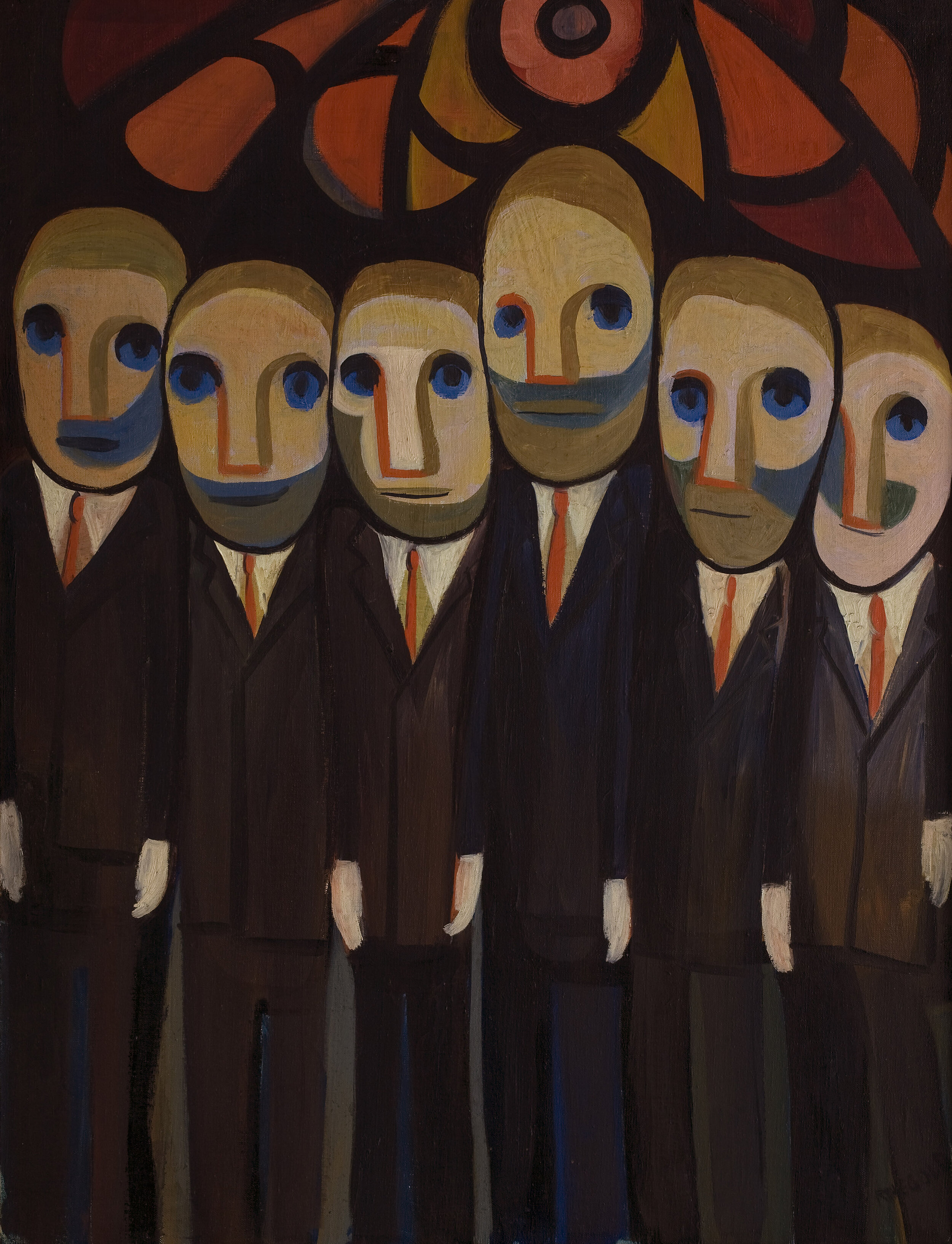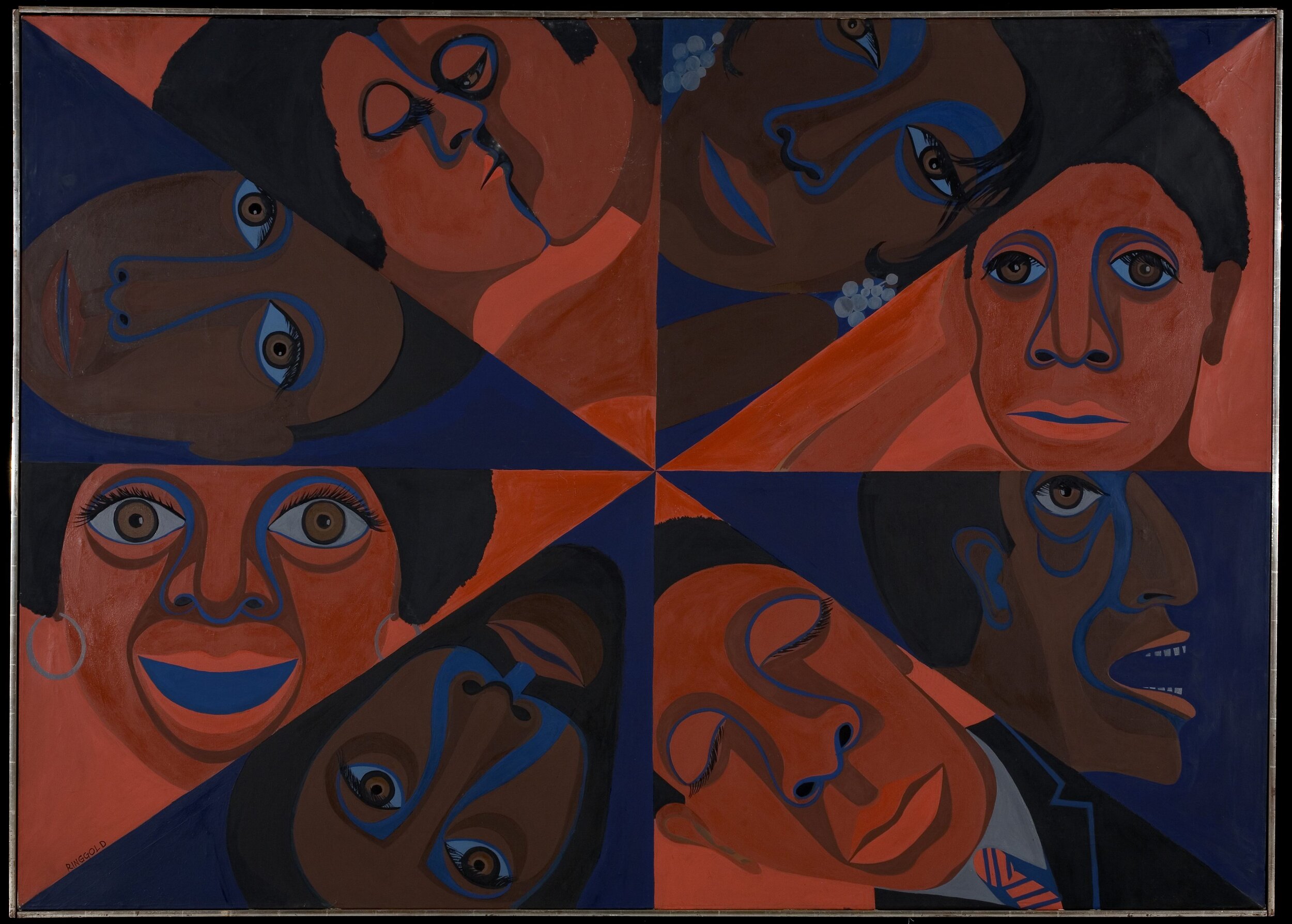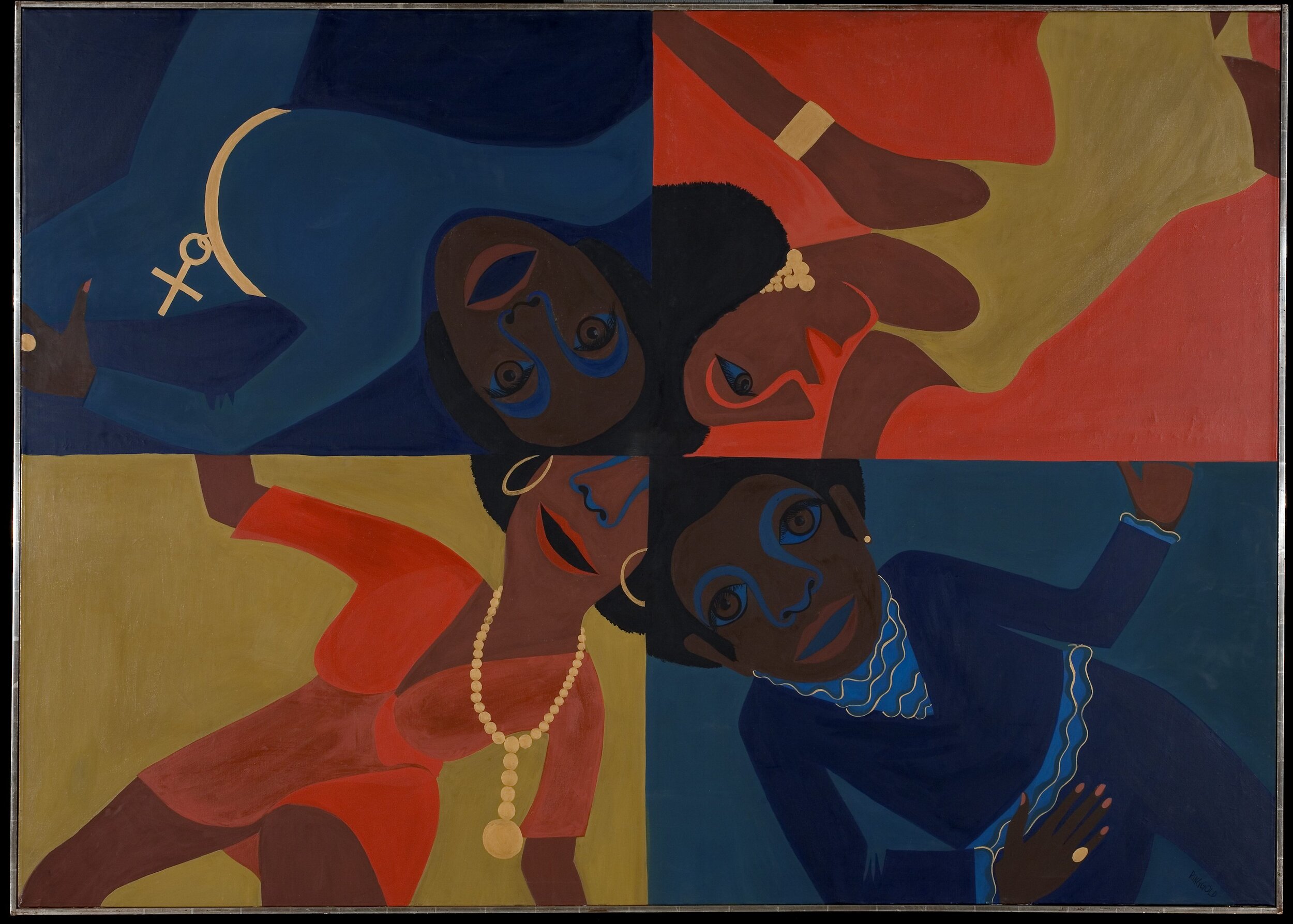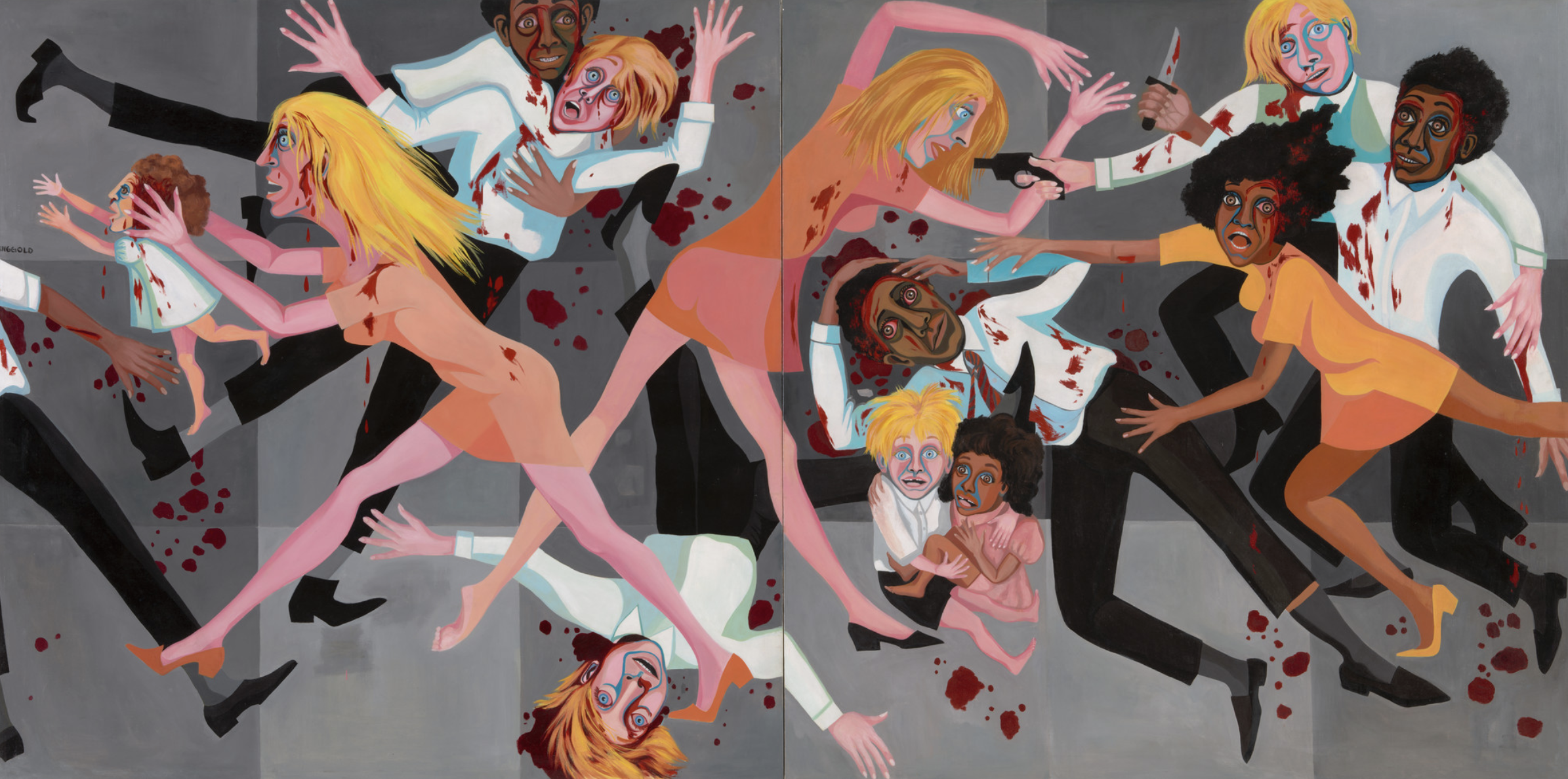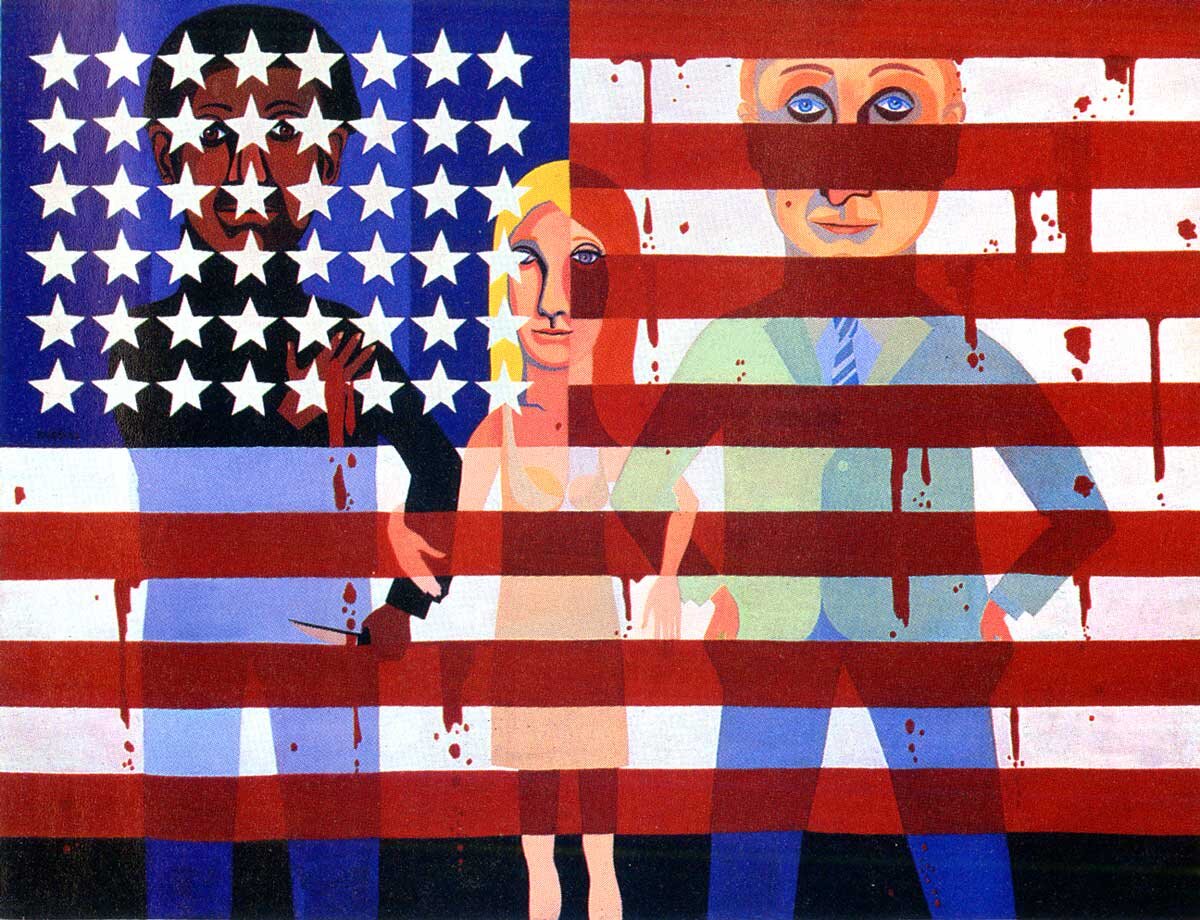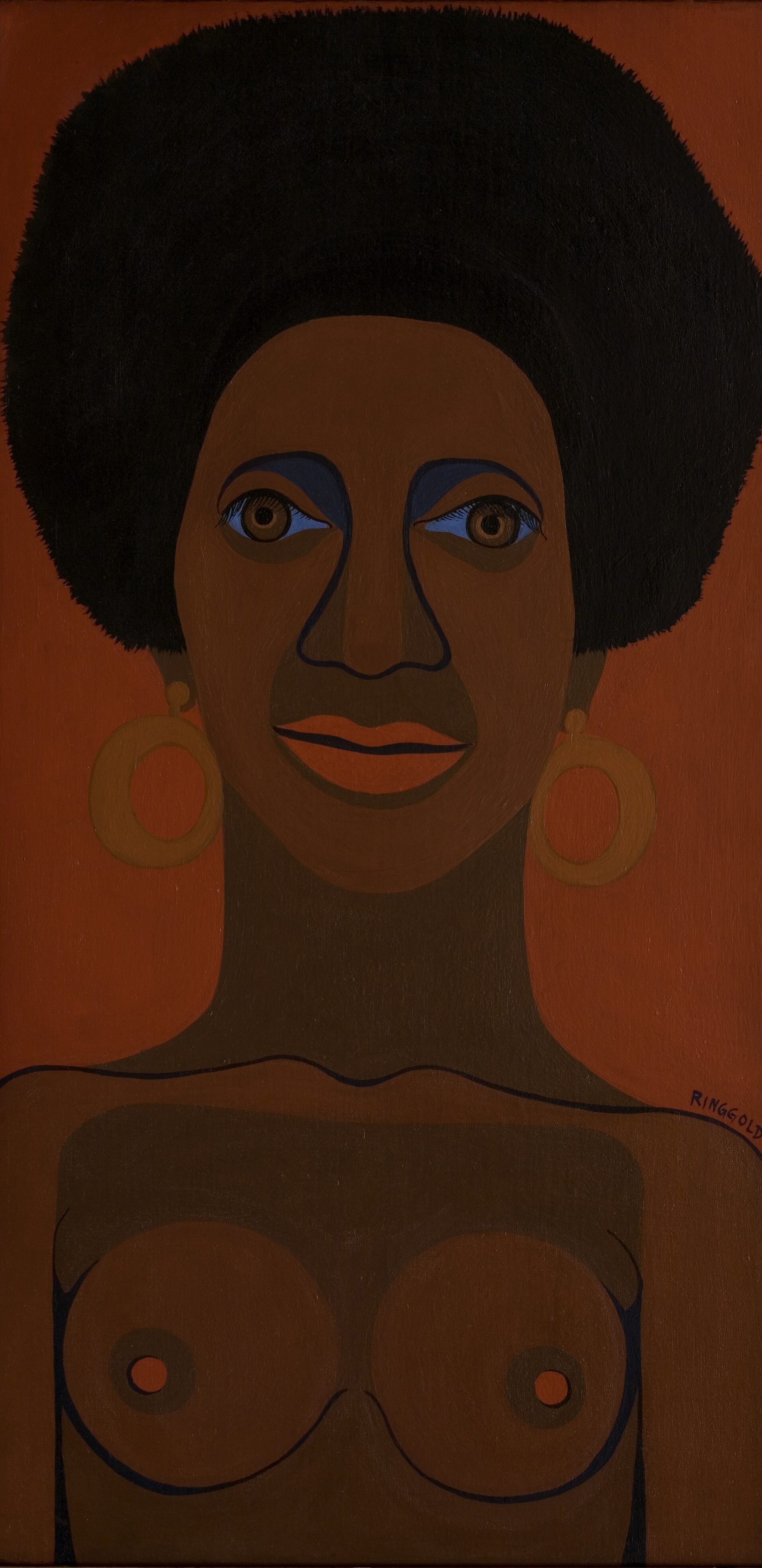That time Faith Ringgold said she would paint black without a hint of white.
Faith Ringgold in front of The Flag is bleeding #2 (1997) - Alamy
The poise of Faith Ringgold only matches the rawness of her work. Brutally honest and highly reflective of the America she was born in. An ambivalent America full of symbolisms and leading values influencing the world yet domestically at war.
This ambivalence has been depicted by the Harlem born artist through her notorious stories quilts from the late 70’s through the 90’s. However one shall not overlook Ringgold’s sixties work as it is during this decade that the artist threw some of her most engaged - sometimes controversial - pieces motivated by her rage for the system, love for her people and hope in humanity all expressed in series of oil on canvas.
An outspoken activist and social justice fighter, Ringgold painted America’s untold history and stories through many perspectives - the view of an Afro American woman first - as the artist mentions storytelling and documenting history as part of the mission of every artist. This very dogma highly manifested in The American People Series (1963-1967) and The Black Lights Series (1967-1970). As before there were the colourful quilts - and later children books - there were the oil paintings. The dark and terrible oil paintings of Faith Ringgold.
The American People Series #18 : The Flag is Bleeding, Faith Ringgold, 1967
The Black Lights Series #10 : Die Nigger, Faith Ringgold, 1969
The two are cornerstones of Ringgold’s work and critical of the country’s symbols she has made an habit of altering. It is to each to have a double reading of those tweaked symbols, the flag being her favourite. The American People Series #18 : The Flag is Bleeding (later would do a quilt version in 1997) but also in Black Lights #10 : Die Nigger are among the many of her very own representations of the stars and the stripes, the latter being a critic of a time - year 1969 - where the country was injecting millions in the space race to be the first to plant the flag on the moon while letting black children die. The American flag will become a recurrent pattern with hidden messages in the artist work beyond race matters.
“I was . . . terrified because I saw Die as a prophecy of our times.” The children grasping each other near the center of the painting give form to this fear of the future.”
The American People #20 - Die (1967)
The American People Series has been deemed scandalous for its crude depiction of races struggles, oppression of the black community and growing and unreported violence. Rage and terror aroused from the series culminating with the ultimate work of the series : The American People Series #20 - Die (1967). An outstanding depiction of violence amidst growing Civil Rights and Black movements staged on a rework of Picasso’s infamous Guernica. A vision of horror that haunted Ringgold for long :“I was . . . terrified because I saw Die as a prophecy of our times.” The children grasping each other near the center of the painting give form to this fear of the future.”
Violent and necessary. On the other spectrum, The Black Lights Series shed light on the beauty of the black community. A series for which she decided she would not use white, adding complexity to the process she recalls: “In order to make people beautiful, I had to create clearly defined abstract shapes.”
The Black Lights Series #12 : Party Time (1969)
“I wanted to paint dark. It was hard as oil painting is really transparent. In order to get it opaque you have to mix a little white to make two dark colours show up next to each other.”
Inspired by the ones like Ad Reinhardt, Warhol’s Pop Art but also the Bakuba people of Congo from which she borrowed the geometrical Kuba cloth designs to create Ego painting, Ringgold explored through a variation of forms. Out of this darkness emerges intimacy, celebration and gentle confidence in the portraits. Remembering this buzzing era, the artist says “Everything was beautiful: black pride, black power”.
By painting all shades of black without the lighter tones, Ringgold dared say that black could exist in the absence of white and not only be a shadow.
A series bearing odd and unfortunate resemblance to our times amidst revival of Black movements globally.
Later on, the New Jersey resident would engage in her infamous quilts but also other printing mediums like offset lithography to keep telling the US untold stories through its symbols.


